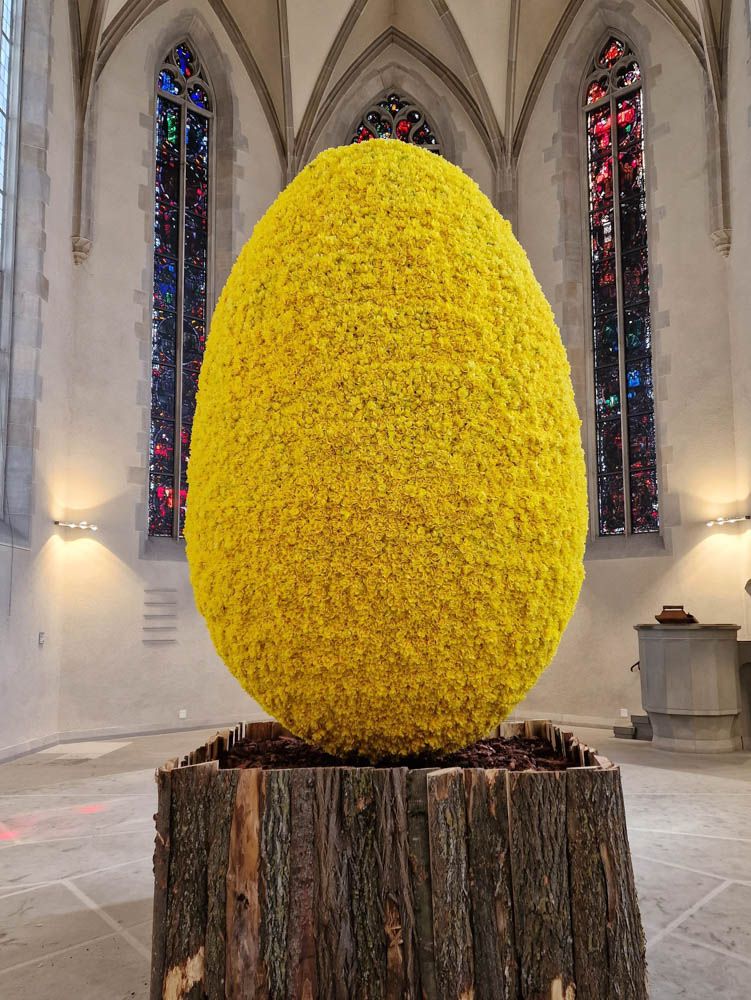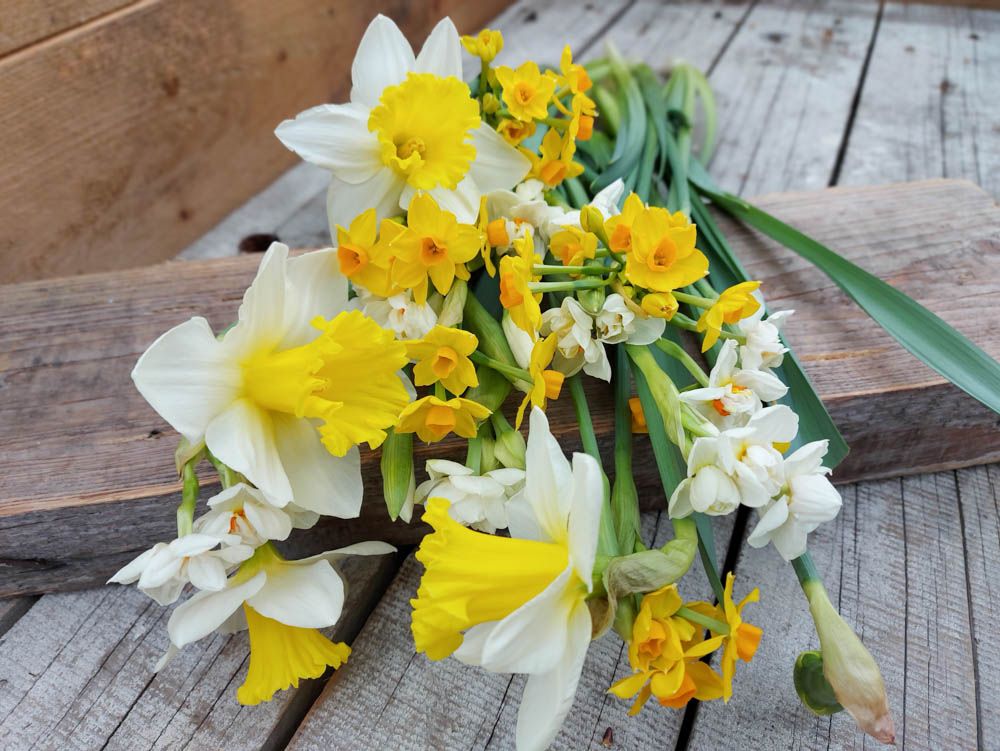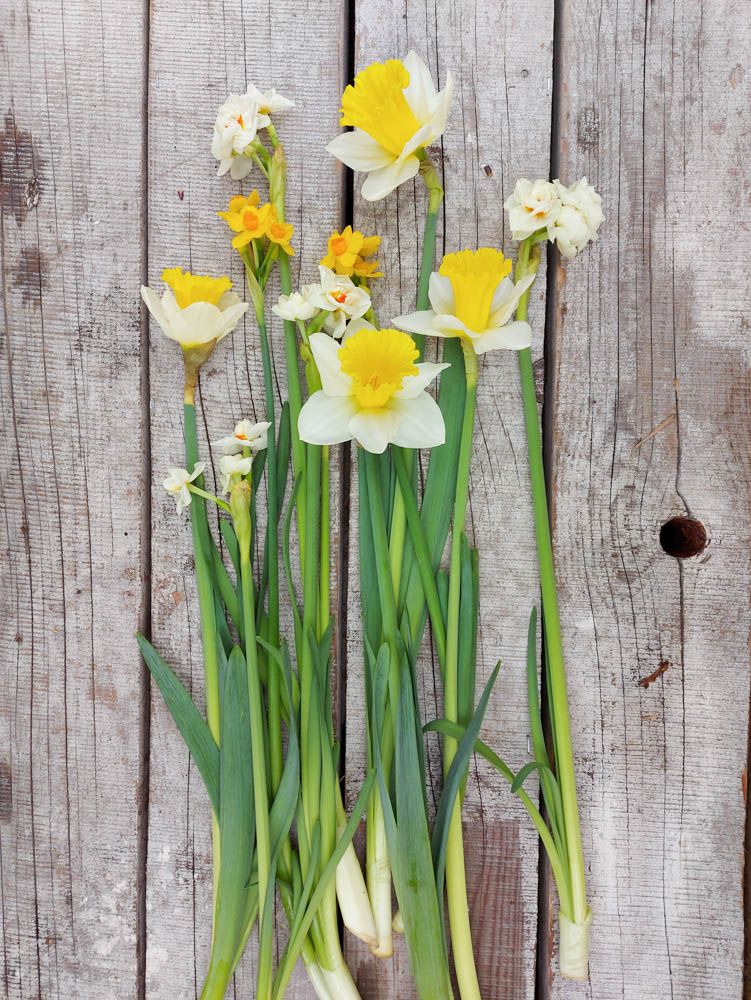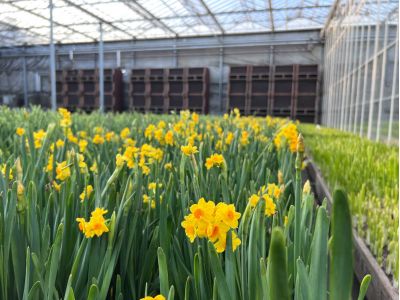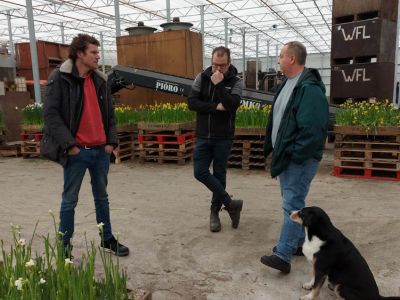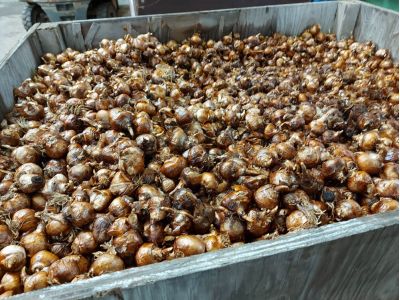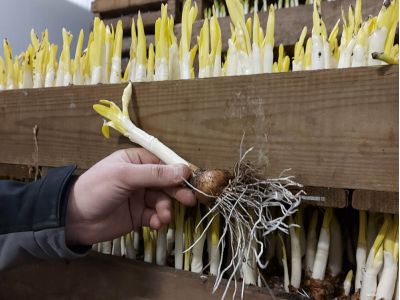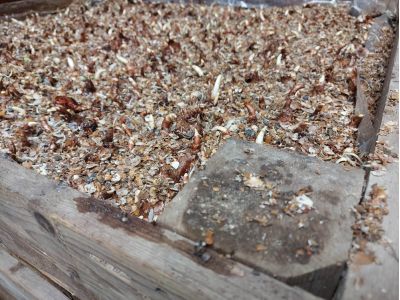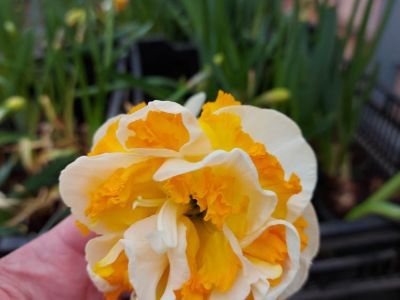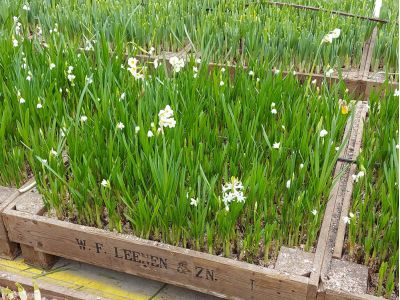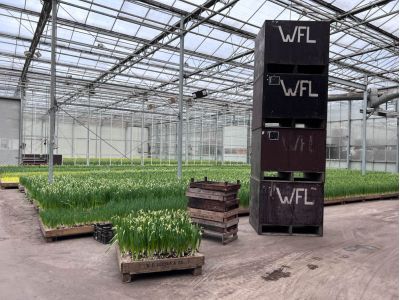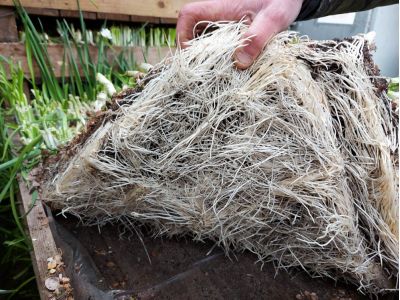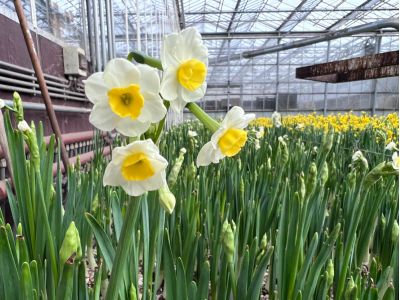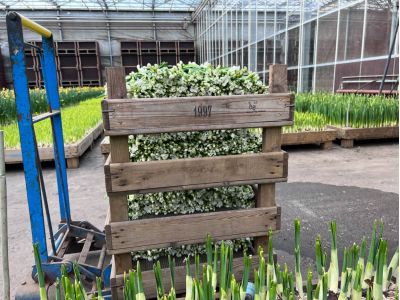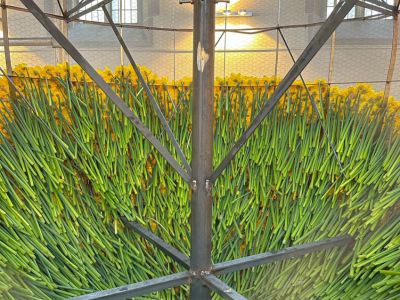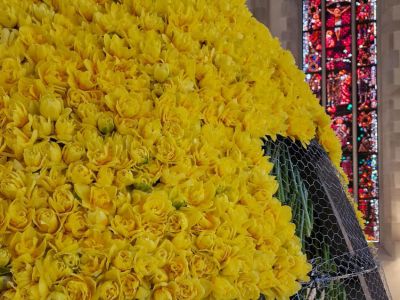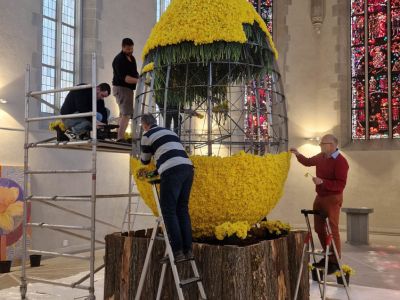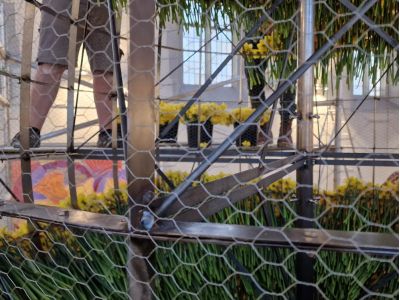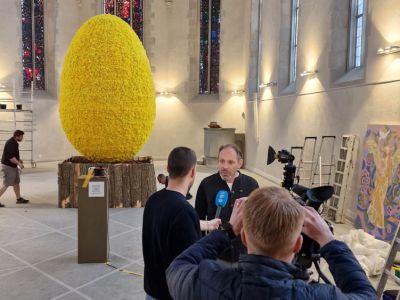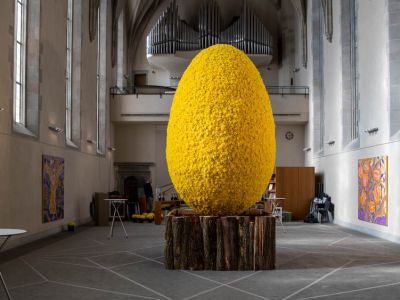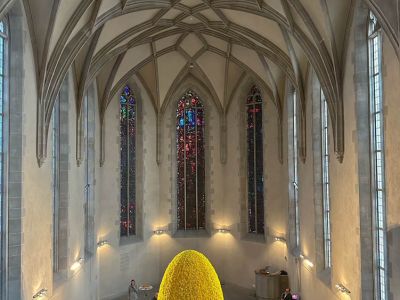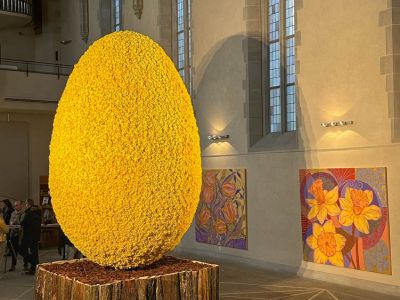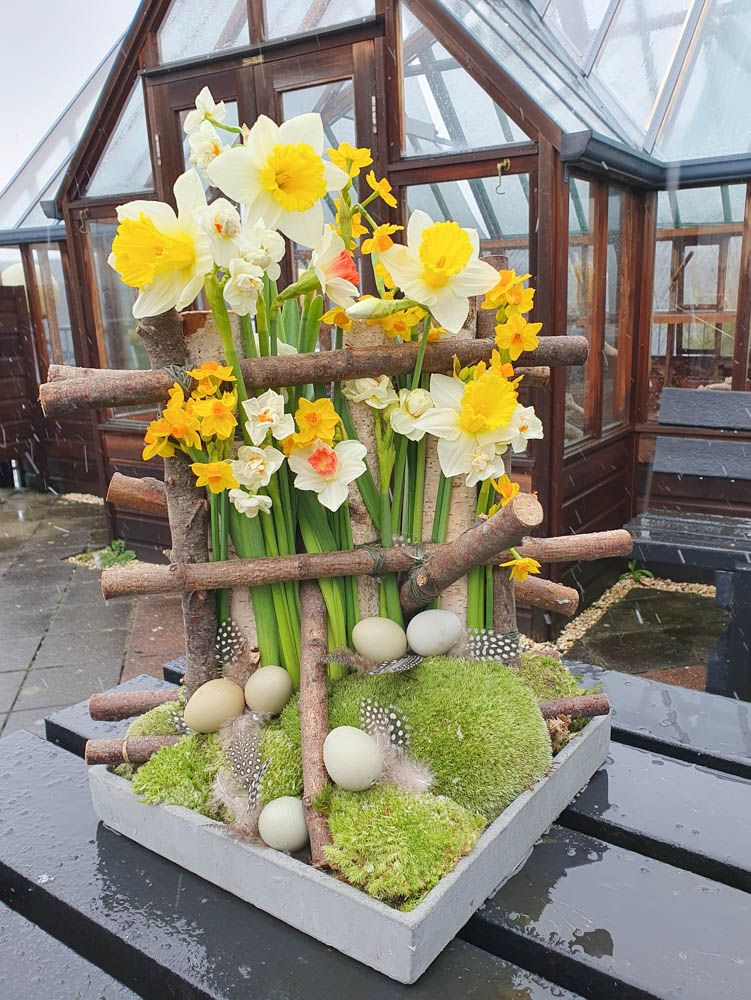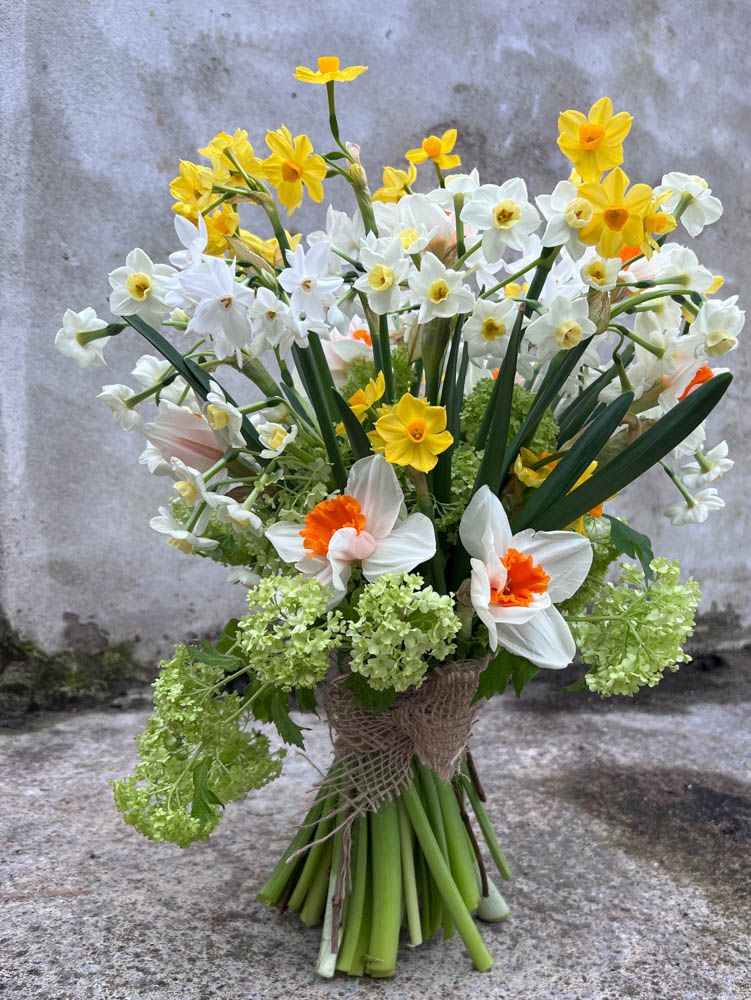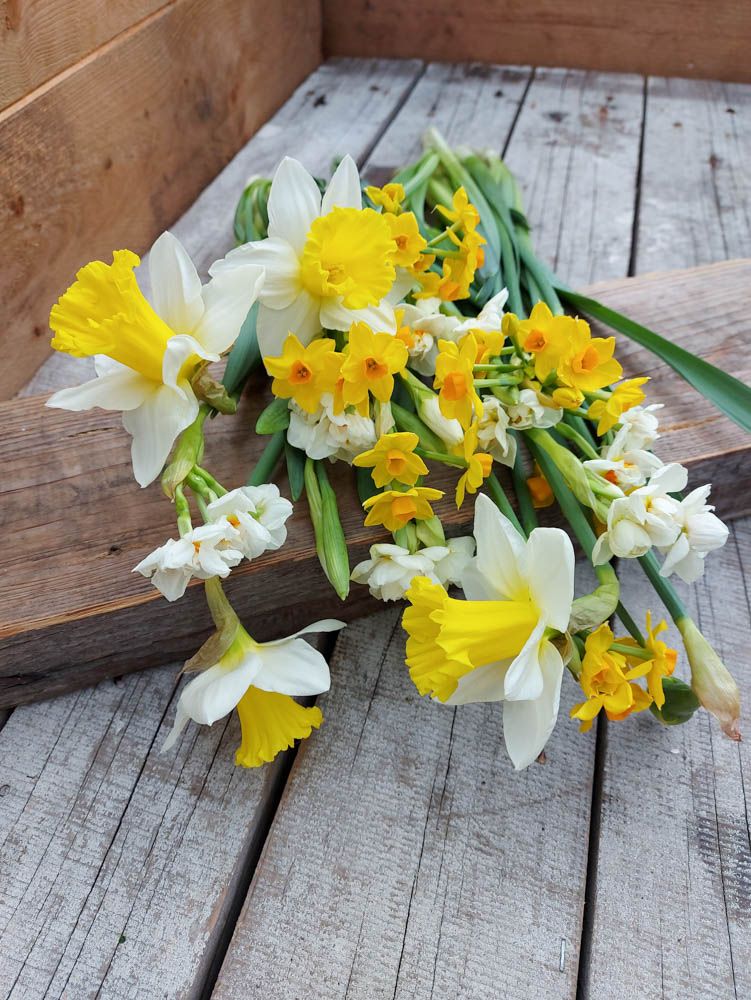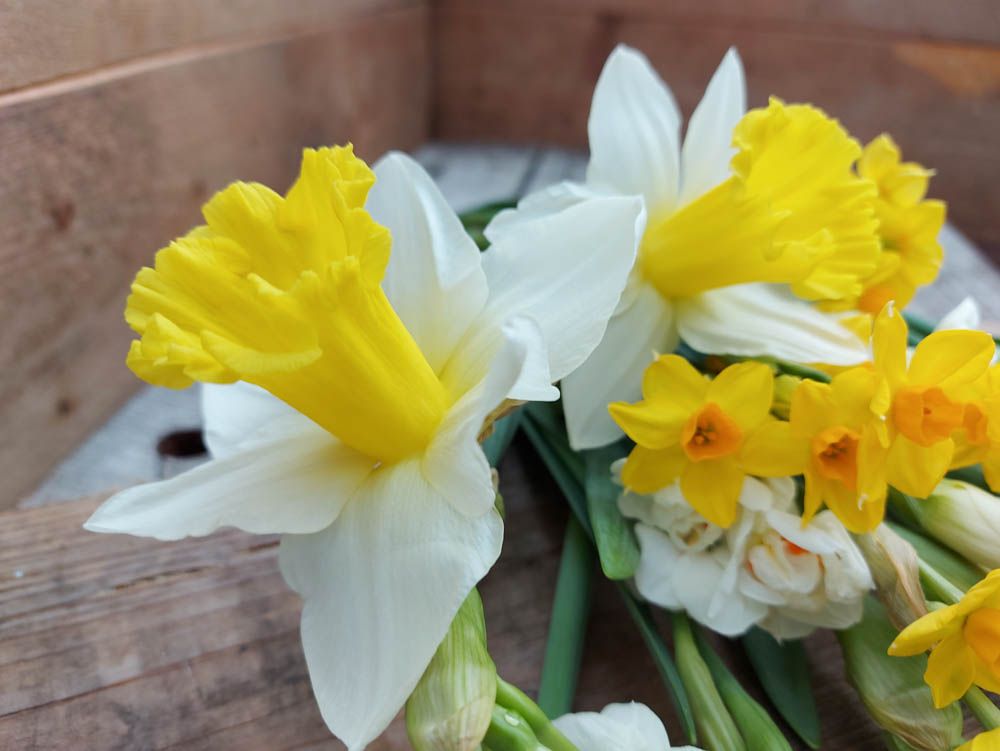W.F. Leenen
Narcissus
The brothers Jaco and Dirk Leenen are the third generation in the company W.F. Leenen. W.F. Leenen specializes in breeding and growing various types of daffodils, both for cutting and as bulbs. In addition, the brothers grow Scilla, Leucojum, Fritillaria and Sonatinis on a smaller scale.
Quality is more important than quantity! They use their own grown bulbs for forcing the flowers, so that they have control over the quality. This year about 20 varieties of daffodils are grown for cutting. Small quantities of one variety are grown, so that there is a large product range on the market, on a small scale.
In the winter months the focus is on cut flowers, in the summer on bulb cultivation. The bulb extracts an enormous amount of energy and nutrients from the soil, leaving very poor soil after four years and the bulb cannot grow well anymore. That is why the bulbs are moved to a different piece of land every four years.
Care
Combining daffodils with other flowers remains difficult. Before the flowers leave the nursery, they are pre-treated to reduce the mucus, but as soon as the flowers are cut, they release mucus again, which most other types of flowers cannot tolerate. Always use a clean vase with cold water and change the water regularly.
Durable
The daffodils are grown on a substrate of shells and sand. The germinated roots anchor themselves better in the shells than in the soil and it helps to prevent fungi and bacteria. This way of growing is clean, because no soil sticks to the stems and the soil does not have to be disinfected. After harvesting, the bulbs are lifted and the substrate is reused by gardeners. So there is little waste.
The daffodils are grown with little energy. A heat pump and solar panels are used. The stored energy is only used for heating on very cold days. The goal is to eventually be able to grow without gas entirely.
Did you know?
The bulbs of the daffodil contain a high level of the substance Galantamine. This substance is used in Alzheimer's disease. The Galantamine stops the breakdown of 'acetylcholine', a signaling substance that ensures the transfer of information in the brain.
Breed
Breeding bulb flowers is a long process. The same goes for daffodils. It takes a long time to grow a bulb from a seed that blooms and is of good quality. From one bulb, you have two bulbs the following year. After six years you may have a new species. Another five to ten years later you can test a new species. Before you can multiply you will be thirty years further down the road. Jaco and Dirk continue what their father and great-grandfather started. And even today, the brothers are intensively looking for new special varieties, in the hope that the next generation will be able to market them.
Guinness Book of Records
An Easter egg, not out of chocolate, but made with daffodils. Paul Fleischli of Blumen Krämer in Zurich went for a new listing in the Guinness Book of Records. To achieve this ranking, he had to break his own record (1996): an egg, made of daffodils, higher than two meters. And that's what he did. Fleischli and his team have made an Easter egg no less than 3,5 meters high and with a diameter of 2,2 meters. To finish the egg, 30,000 stems of Narcissus Bright Paradise by Dutch grower W.F. Leenen were used. This special Easter egg was on display from 5 to 10 April at the Wasserkirche in the middle of Zurich along the river Limmat.
FloraPodium, 13 April 2023
